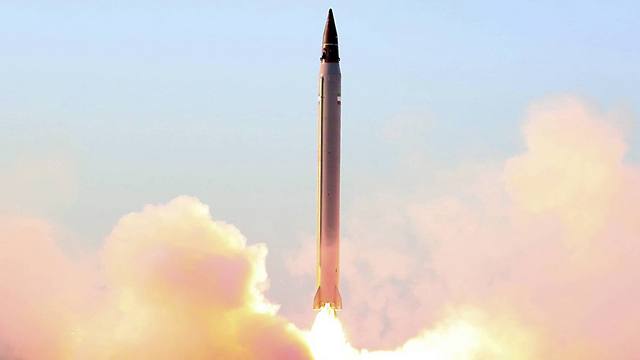First such Iranian missile in range of Israel emphasizes accuracy, broadening potential target list.
Iran has successfully tested a new precision-guided ballistic missile, its defense minister said on Sunday, signaling an apparent advance in Iranian attempts to improve the accuracy of its missile arsenal.
The Islamic Republic has one of the largest missile programs in the Middle East, despite a United Nations arms embargo, but its potential effectiveness has been limited by poor accuracy.
State television showed what appeared to be a successful launch of the new missile, named Emad, which will be Iran’s first precision-guided weapon with the range to strike its regional arch-enemy Israel.

Advertising
“The Emad missile is able to strike targets with a high level of precision and completely destroy them…This greatly increases Iran’s strategic deterrence capability,” Defense Minister Hossein Dehghan said at a televised news conference.
“Our leadership and armed forces are determined to increase our power and this is to promote peace and stability in the region. There is no intention of aggression or threats in this action,” he added.
The Islamic Republic is wary of a potential pre-emptive strike on its nuclear sites by Israel. In turn, Israel fears that a nuclear agreement Iran sealed with world powers in July may be insufficient to stop Tehran developing an atomic bomb.
The accord curbs proliferation-prone aspects of Iran’s nuclear energy program in exchange for crippling sanctions being lifted. Iran says its nuclear activity is wholly peaceful. Israel is widely presumed to have the Middle East’s only nuclear weapons.
Accuracy
Anthony Cordesman, a researcher at the Center for Strategic and International Studies in Washington, wrote in January that the Emad would have a range of 1,700 km (1,060 miles), 500 metres (1,650 feet) accuracy and a 750 kg (1,653 pound) payload.
It is a variant of the liquid-fuelled Shahab-3 missile, which has been in service since 2003 and has a similar range but is accurate only to within 2,000 meters.
“The Emad represents a major leap in terms of accuracy. It has an advanced guidance and control system in its nose cone,” Israeli missile expert Uzi Rubin said.
In August, Iran unveiled a new short-range missile named Fateh-313 it said also offered improved precision over its predecessor, as part of an apparent drive to boost the accuracy of its missile arsenal.
The Fateh-313 has solid fuel, allowing it to be set up and launched faster than liquid-fuelled missiles, and a range of 500 km – enough to hit targets in Gulf Arab powers locked in a regional cold war with the Islamic Republic, but not Israel.
Improvements in accuracy could let Iran use its missiles in a wider variety of roles, for example by targeting military bases or economic assets rather than population centres.
The International Institute for Strategic Studies (IISS), a British-based think tank, noted in 2010 that poor accuracy meant Iran could use its missiles only as a “political weapon” to target enemy cities since their military utility was “severely limited”.
As reported by Ynetnews
